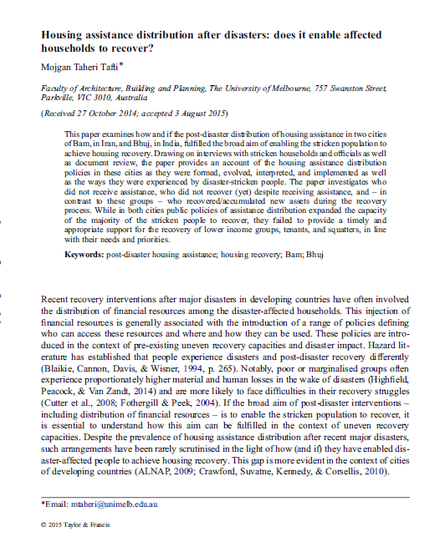
This paper examines how and if the post-disaster distribution of housing assistance in two cities of Bam, in Iran, and Bhuj, in India, fulfilled the broad aim of enabling the stricken population to achieve housing recovery. Drawing on interviews with stricken households and officials as well as document review, the paper provides an account of the housing assistance distribution policies in these cities as they were formed, evolved, interpreted, and implemented as well as the ways they were experienced by disaster-stricken people. The paper investigates who did not receive assistance, who did not recover (yet) despite receiving assistance, and – in contrast to these groups – who recovered/accumulated new assets during the recovery process. While in both cities public policies of assistance distribution expanded the capacity of the majority of the stricken people to recover, they failed to provide a timely and appropriate support for the recovery of lower income groups, tenants, and squatters, in line with their needs and priorities.
Resource collections
- Earthquakes
- Learning from crises
- UN Habitat - Urban Response Collection
- Urban Response - Urban Crisis Preparedness and Risk Reduction
- Urban Response Collection - Community Engagement and Social Cohesion
- Urban Response Collection - Economic Recovery
- Urban Response Collection - Environment and Climate Change
- Urban Response Collection - Housing, Land and Property
- Urban Response Collection - Urban Crisis Response, Recovery and Reconstruction
- Urban Response Collection - Urban Resilience